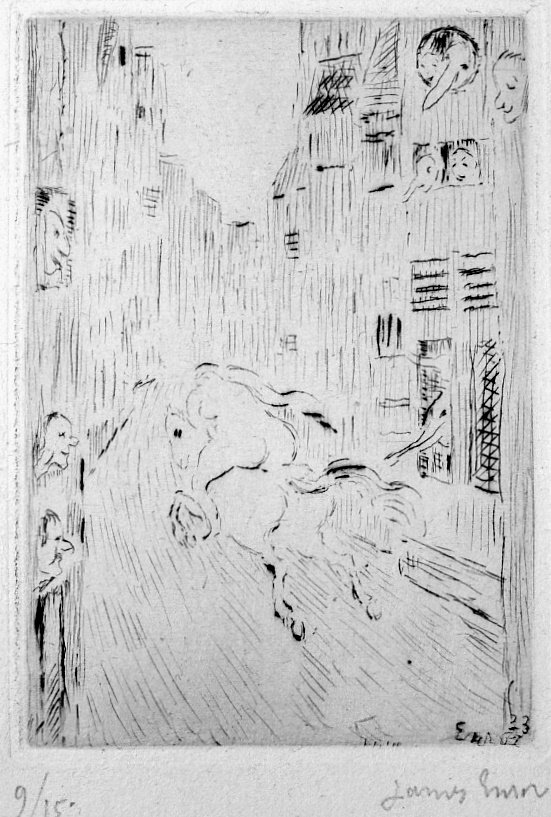Lady Godiva
James Ensor (1860-1949), Lady Godiva, etching and drypoint, 1933, signed in pencil lower right and numbered (9/15) lower left margin. References: Croquez 130, Taevernier 130, Elesh 137, third state (of3). In good condition, on the full sheet with very wide margins (soft folds in margins, a repaired nick at right edge, 5 x 3 1/2, the sheet 12 3/4 x 11 inches.
A fine delicately printed impression, with burr on the drypoint especially on Lady Godiva and her horse’s hair. Printed on a Holland laid paper.
There are two paintings related to this print, one done before the print (collection of Mrs. Harry C. Sandhouse, New York, Tricot 559, 1927), and another after (Tricot 728, 1937, location unknown).
According to the legend (as related in Wikipedia),Lady Godiva was an 11th century Anglo-Saxon who “took pity on the people of Coventry, who were suffering grievously under her husband’s oppressive taxation. Lady Godiva appealed again and again to her husband, who obstinately refused to remit the tolls. At last, weary of her entreaties, he said he would grant her request if she would strip naked and ride through the streets of the town. Lady Godiva took him at his word and, after issuing a proclamation that all persons should stay indoors and shut their windows, she rode through the town, clothed only in her long hair. Just one person in the town, a tailor ever afterwards known as Peeping Tom, disobeyed her proclamation in one of the most famous instances of voyeurism. In the story, Tom bores a hole in his shutters so that he might see Godiva pass, and is struck blind. In the end, Godiva’s husband keeps his word and abolishes the onerous taxes.
In Ensor’s version, there are a number of Peeping Toms in the town, some with rather large noses and indeed, the figure peering through the shutters at the lower right might well be an elephant. The town resembles Ostend; indeed it appears to be the view of Boulevard Van Iseghem from Ensor’s studio.
$4400
